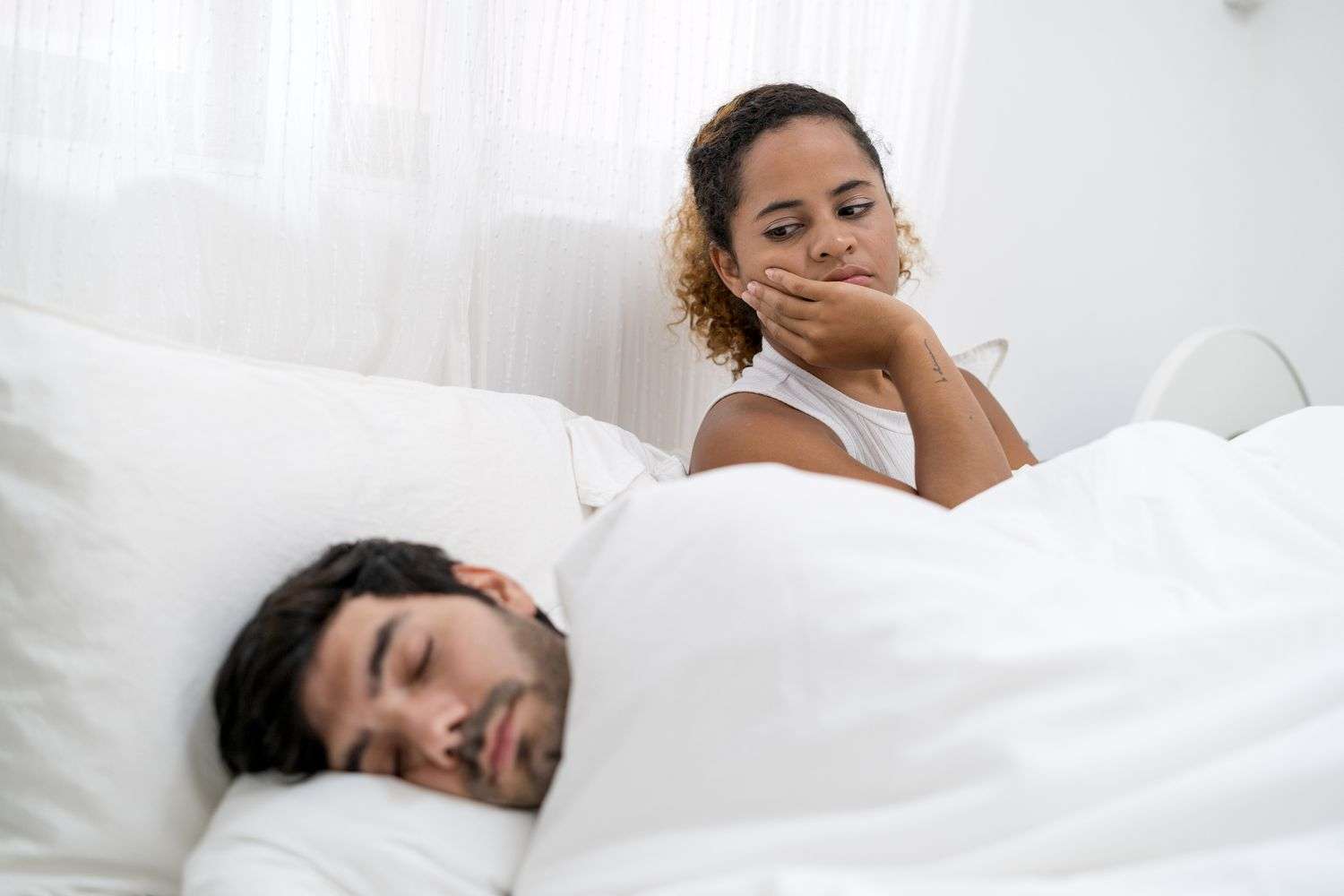How Do You Treat Hypersexuality?
Hypersexuality with bipolar disorder isn’t a separate condition or problem that needs its own treatment — it’s a symptom of bipolar disorder. Once the condition is successfully treated and mood swings and symptoms are under control, those hypersexual feelings will dissipate.
“When bipolar disorder is not being treated effectively, hypersexuality is often a symptom that can wreak havoc in a person’s personal life and lead to poor decisions with possible serious and negative consequences. Treating the bipolar symptoms and getting hypomania and mania under control will often target and help hypersexuality as well,” explains Viguera.
“You treat the disease, not the symptom,” she adds. “Treatments usually involve medications such as mood stabilizers or antipsychotics, as well as psychotherapy such as cognitive-behavioral therapy or interpersonal social rhythm therapy,” she says.
Once the disease is under control, people with bipolar disorder often react differently to sex and their past behaviors.
“You often see a lot of regret for the past behavior, because they put themselves in very bad situations,” says Viguera. “When they’re well, they reflect on that, and there can be a lot of regret and remorse. It’s just another clue that shows you that it was not their normal state.”
In addition, hypersexuality can be one of the most difficult and challenging symptoms both for people living with the condition and for those close to them.
Sometimes the inability to control sexual urges leads to broken marriages and relationships. Both people in a relationship can suffer if these urges result in infidelity: The partner with bipolar disorder may feel distraught over having hurt the other partner, who in turn feels confused and angry for having been cheated on.
Hypersexual behavior can also negatively affect a couple’s sex life. Studies that examine sexuality in couples with one bipolar partner found decreased levels of sexual satisfaction associated with the diagnosis.
Bipolar Behavior, Hypersexuality, and Related Conditions
A meta-analysis published in the December 2016 issue of the Journal of Affective Disorders found a high prevalence of comorbidity between substance use disorders and bipolar disorder — meaning that a person is experiencing some form of both conditions simultaneously.
The study found substance abuse disorders to be quite common in people with bipolar disorder. The disorders with the highest prevalence in conjunction with bipolar disorder were alcohol use (42 percent), followed by cannabis use (20 percent) and other illicit drug use (17 percent).
Stimulants in particular can be problematic: The study authors point out that if stimulants are being used or abused, they could mimic symptoms of mania. In addition, alcohol and cannabis use can be linked to poor judgment, which may further contribute to hypersexual behavior.
Different Treatments for Bipolar Disorder
Bipolar disorder is usually treated with:
- Mood-stabilizing medications
- Antipsychotic medications
- Antidepressants
- Cognitive-behavioral therapy
- Other forms of therapy and counseling that may include family members
- Electroconvulsive therapy, which involves using small electrical waves to treat the brain
The right combination of these various therapies can reduce or eliminate bipolar mood changes between mania and depression, as well as prevent or reduce symptoms, including hypersexuality.
Those symptoms of hypersexuality may be a red flag for some people with bipolar disorder indicating that they are slipping into a manic episode. If a person with bipolar disorder starts to notice themselves thinking more about sex or engaging in promiscuous behavior, they should notify their doctor of this onset of symptoms.
Resources We Love
Depression and Bipolar Support Alliance (DBSA)
This organization supports people with depression and bipolar disorder. Learn more about treatment options for bipolar disorder, and check out the DBSA Wellness Toolbox.
Mayo Clinic
A top U.S. hospital, Mayo Clinic has educational information about bipolar disorder on its website and also offers care for bipolar disorder at its four locations in the United States. Learn more about how to schedule an appointment.
National Institute of Mental Health (NIMH)
NIMH is a part of the National Institutes of Health, which is the world’s largest biomedical research agency. If you’re interested, consider participating in a research trial to help researchers discover more about potential treatments for bipolar disorder.
Additional reporting by Barbara Kean.
Bipolar disorder, also known as manic depression, is a diagnosis bestowed upon those who experience sweeping mood swings that range from depressive lows to manic highs. It’s a disorder that can have a variety of adverse effects on your life, including irritability, psychosis, sadness, low energy, low motivation, or loss of interest in previously enjoyable activities.
Bipolar Disorder and Your Sex Life
In addition to these more general symptoms, however, bipolar disorder can also affect your sex life, leading to a drastically increased libido during periods of mania. Some who experience this heightened sexuality may receive a diagnosis of hypersexuality or sexual addiction, a diagnosis that still carries a lot of controversy within the fields of both psychology and sexuality. There are those who hesitate to pathologize sexuality in this way. After all, it’s difficult to measure how much of a sex drive is too much.
No matter what you choose to call it, however, if these symptoms become disruptive to your life, it’s worth seeking out help.
Understanding Hypersexuality
Hypersexuality is defined as an increased need or pressure for sexual gratification. It can often be a symptom of mania, and may also include decreased inhibitions or a need for “forbidden” sex.
Hypersexuality is listed as one of the diagnostic criteria for bipolar disorder, so it’s a common part of bipolar disorder.
Understandably, if you’re experiencing a manic episode and you succumb to your urges, you’re putting your relationships at risk, as well as yourself. Unrestrained hypersexuality can place you at an increased risk of contracting a sexually transmitted infection (STI).
Understanding Sexual Addiction
Sexual addiction, also known as compulsive sexual behavior, is thinking about and engaging in sexual behavior so often that it interferes with your relationships, your health, your job, or other aspects of your life. It can damage many aspects of your life if it’s left untreated.
Sexual addiction can be just as destructive as being addicted to chemical substances. An estimated 3 to 6 percent of adults in the United States, predominantly male, are sexually addicted. Although sexual addiction is not listed as a disorder in the current Diagnostic and Statistical Manual of Mental Disorders (DSM-5), it can be diagnosed as an impulse-control disorder in the current International Classification of Diseases (ICD-10), which is the international standard for diagnosis.
Behaviors Associated With Sexual Addiction
Some of the specific behaviors associated with sexual addiction include:
- Anonymous sex with multiple partners (including one night stands)
- Compulsive masturbation
- Compulsive sex with sex workers
- Frequent patronizing of sexually-oriented establishments
- Habitual exhibitionism
- Habitual voyeurism
- Inappropriate sexual touching
- Multiple affairs outside a committed relationship
- Rape
- Sexual abuse of children
It’s important to note here that any one of these behaviors in and of itself does not constitute an addiction.
Consequences
These compulsive sexual behaviors can carry a high price. Financially, they can lead to outrageous charges from prostitutes or phone sex lines. Professionally, your behavior may cause you to lose your job. Personally, your relationships, intimate and otherwise, could be damaged. Health-wise, if you’re indiscriminate, sexual contacts could lead to disease.
If you’re concerned about your own behavior, talk to your doctor, or to another sexuality professional. You may require additional sexual counseling/therapy in addition to the treatment you’re already receiving for bipolar disorder.
There are many symptoms of bipolar disorder, but hypersexuality is one that is not commonly known, and not fully understood by healthcare professionals. Hypersexuality is an excessive desire for sexual activity or sexual activity that is extremely frequent. You may have also heard the term nymphomania. This is an outdated term that is no longer used in the clinical setting.
People with bipolar disorder are more likely to experience hypersexuality, particularly during manic episodes. This can present challenges with sexual satisfaction and relationships. Additionally, it is linked to increased sexual risk-taking and associated consequences.
In this article, we will discuss what hypersexuality is, the four signs, how doctors address it, and tips for navigating relationships with hypersexuality.
![]()
Thianchai Sitthikongsak / Getty Images
What Is Bipolar Hypersexuality?
Bipolar hypersexuality is an extreme focus on sex, sexual thoughts, or sexual activity that can be part of bipolar disorder, generally experienced during manic episodes. Hypersexuality can lead to feelings of distress, and can negatively impact relationships and other areas of life such as school and work.
People struggling with hypersexuality may be out of control or unaware of a problem in the moment, and then feel intense regret after the fact. However, the experience is not the same for everyone.
In the Moment
In the moment, hypersexuality may present as a strong and frequent urge to engage in sexual activity, masturbate, or view pornography. Potential consequences are not the primary concern as the focus is on satisfying the urge, and some people describe their experiences as being addicted to or obsessed with sex. Because of this, the person is more likely to engage in risky behaviors such as unprotected sex with a stranger or viewing pornography at work.
After the Fact
After the fact, a person who has acted on urges associated with bipolar hypersexuality may feel intense shame or regret. This could be due to the frequency or the feeling of not being able to control the urges. Additionally, it could be due to remorse related to inappropriate behavior. They do not want to continue experiencing and acting on the urges and seek ways to control themselves in the future.
Mental Health and Sex in Bipolar Disorder
In bipolar disorder (BD), sex drive and satisfaction can change depending on the phase. For example, sex drive and satisfaction may be very different during a manic episode in comparison with a depressive episode. More specifically, high sex drive is a sign of the manic phase of bipolar disorder.
Hypersexuality
Hypersexuality is an extreme desire for sexual activity or extreme sexual activity frequency. This is a symptom of mania. This can increase during manic episodes, along with general energy and activity levels.
Symptoms of Hypersexuality
You may be experiencing hypersexuality if you have:
- Continued sexual risk-taking despite negative effects
- Difficulty with relationships, including commitment and fidelity
- Excessive thoughts about sex
- Inability to control sexual thoughts or behaviors
- Intense sexual fantasies that feel out of control
- Strong drive for sexual behaviors along with relief and then guilt after the fact
- Use of sexual thoughts or behaviors to avoid feeling emotions
Hyposexuality
Hyposexuality is when sexual behavior and desire for sexual activity is excessively low. This is more common during depressive episodes of bipolar disorder. Additionally, depressive phases of bipolar disorder are associated with an increase in sexual distress.
Symptoms of Hyposexuality
You may be experiencing hyposexuality if you have:
- Decreased desire for sexual activity
- Extremely low self-confidence in appearance or desirability
- Feelings of sexual vulnerability or worthlessness
- No interest at all in sex
- No interest in grooming or personal hygiene
- No response when exposed to sexual content such as a book or movie
- Physical or mental exhaustion
4 Signs of Hypersexuality in BD
Hypersexuality is more than just a high sex drive. Additionally, hypersexuality associated with bipolar disorder is different from hypersexuality among people who do not have bipolar disorder. Here’s how to tell the difference.
1. Taking Risks
People who struggle with hypersexuality often have a pattern of taking risks with their sexual behaviors. This may include having sex without protection, with many partners, engaging in sexual behaviors at work or in public places, and compromising relationships with infidelity. The risks associated with the behaviors are often not considered, or they may seem insignificant, until after the fact.
2. Feeling Regret or Shame After
In bipolar hypersexuality, there are often feelings of shame or regret after engaging in sexual behaviors. For example, there may be an intense urge or extreme desire to engage in a risky sexual behavior. They may feel relief immediately after engaging in the behavior, and then intense feelings of regret or shame as they process their actions.
3. Continuing Unwanted Behaviors
Despite the consequences of sexual behaviors, people with hypersexuality often struggle to stop repeating the unwanted behaviors. The negative effects of sexual behaviors may include sexually transmitted disease (STD), job loss or compromised job or school performance, financial issues, legal issues, and relationship challenges, among others. People with bipolar hypersexuality often feel out of control and struggle to resist their extreme sexual urges.
4. Changes With Manic and Depressive Episodes
The changes in sexual thoughts and behaviors experienced by people with bipolar hypersexuality set this condition apart from hypersexuality among people without bipolar disorder. Their sex drive and sexual behaviors tend to fluctuate. Hypersexuality is generally associated with episodes of mania. Conversely, sexual desire and behavior tend to be lower, possibly even to the point of hyposexuality, during episodes of depression.
How Do Doctors Address Hypersexuality?
Bipolar hypersexuality can be addressed by treating bipolar disorder. Since hypersexuality is a symptom of bipolar disorder, particularly manic episodes, treating bipolar disorder as a whole addresses the hypersexuality. The presence of hypersexuality can also help to guide bipolar treatment adjustments. For example, adding a mood stabilizer to the protocol may be beneficial.
Inconsistent Definitions
There can be some confusion in diagnosing hypersexuality with bipolar. It is a symptom of mania and is listed as one of the bipolar diagnostic criteria in the Diagnostic and Statistical Manual of Mental Disorders, 5th Edition (DSM-5). Additionally, hypersexuality can be diagnosed among people without mood disorders.
The basic definition of hypersexuality is that it is excessive sexual activity, without reference to possible underlying causes such as a medical diagnosis of bipolar disorder.
Possible Stigma
Especially given the differing definitions of hypersexuality and limited understanding of how it relates to other medical conditions, there can be a stigma. There are often feelings of guilt and shame that come with experiencing hypersexuality and associated behaviors. This can lead to hesitancy in seeking help, along with fear of how a provider may respond. Stigma may be an issue with a provider who does not fully understand the nature of hypersexuality and how it can present as a loss of control for the patient.
Therapy
Psychotherapy, or talk therapy, can be used as part of a treatment plan for bipolar disorder and hypersexuality associated with bipolar disorder. This may include specific techniques such as cognitive behavioral therapy for the individual, couples therapy to work on relationship challenges, or a combination of therapy options.
It is important that the treatment plan is customized to the needs of the patient. There are different ways that hypersexuality can affect a person, and they may respond differently to different treatments.
Medications
Medications are often used in combination with talk therapy to create an effective treatment plan for bipolar disorder. These medications may include mood stabilizers, antipsychotics, and antidepressants. These medications can help to treat and prevent bipolar episodes, including manic episodes associated with hypersexuality.
Relationship Concerns
Both bipolar disorder and associated hypersexuality can include relationship concerns. With hypersexuality, partner relationships tend to be the most impacted. This is, in part, related to the link between hypersexuality and sexual risk-taking and infidelity.
It can be a significant challenge for people with bipolar hypersexuality to manage their symptoms and the effects of those symptoms on those around them. With treatment, however, it is possible to have healthy relationships.
Summary
Bipolar hypersexuality is excessive sexual thoughts or behaviors, which can be linked to bipolar manic episodes. It often presents as a seemingly uncontrollable urge, followed by relief, and then guilt or shame later. There are often negative effects associated with sexual risk-taking, such as sexually transmitted infections, relationship challenges, and issues with work or school. It can be treated and effectively managed with therapy and medications.
A Word From Verywell
Coping with bipolar disorder can be hard, and bipolar hypersexuality adds another layer to the challenge. Especially if you suspect bipolar disorder but it has not yet been diagnosed and treatment has not begun, you may not be able to recognize hypersexuality behavior in the moment. That doesn’t mean it won’t weigh on you after the fact.
Although bipolar hypersexuality is not fully understood, help is still available to manage and cope with bipolar disorder and hypersexuality symptoms. Reach out to a healthcare professional for support, such as a primary care practitioner, psychologist, or psychiatrist.
Frequently Asked Questions
-
Does bipolar hypersexuality last forever?
Bipolar disorder is a lifelong condition. However, that does not necessarily mean bipolar hypersexuality will last forever. People with bipolar disorder experience episodes of depression, mania, and even phases without depression or mania. With continued treatment, bipolar hypersexuality can be managed, and people can experience healthy, happy sex lives.
-
Do all bipolar patients experience hypersexuality?
No, not all people with bipolar disorder experience hypersexuality. Research is limited, but it is estimated that 25% to 75% of bipolar patients experience hypersexuality.
-
Is bipolar hypersexuality related to narcissism?
There are some similarities between bipolar manic episodes, including hypersexuality, and narcissism. However, there are also differences, such as the hypersexuality in bipolar disorder being linked only to episodes of mania.
-
How do you talk to your partner/spouse about bipolar hypersexuality?
Before talking to a partner/spouse about bipolar hypersexuality, take some time to consider their perspective. It can be hard for them, too, especially if there has been infidelity. Go into the conversation with compassion, and suggest ways to work on trust, commitment, and possible coping strategies for the symptoms.




